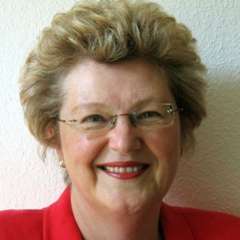The Bayerische Staatsoper has a long Fledermaus tradition. When it was announced that Barrie Kosky was staging his first Fledermaus there, fans started planning trips to Munich months in advance and performances were sold out in no time. They were not disappointed. In true Kosky fashion, he redefines the characters, interprets the satirical plot of Viennese society and mores, and conjures up a hit anchored somewhere between burlesque and vaudeville.
Rebecca Ringst has designed a thoroughly bourgeois setting for Act 1, with elegant turn-of-the-century Viennese façades. But as the story of intrigues and masquerades unfolds, these façades turn to show the tenuous metal structures holding up societal fronts. Kosky gives us Rosalinde and Eisenstein as a couple firmly entrenched in Viennese society, itching to break out of their respective social corsets. And Dr Falke’s staging his revenge of his erstwhile humiliation at the hands of Eisenstein, when he ended up abandoned dressed as a bat, at Prince Orlofsky’s ball is the perfect setting for these adventures.
Along with Klaus Bruns' colourful, genderfluid costumes, with feather boas galore, and a bat ballet infused with Otto Pichler’s energetic and ecstatic choreography, Kosky invites us into his hallucinogenic and champagne-sodden vision of Act 2, replete with a bevy of seemingly dancing chandeliers. At this party everyone is someone else – flirting, lying, storytelling, living out their fantasies in a burlesque world. Act 3's rude awakening in prison, with its open steel skeletons, is softened by one of the most original ideas for the opening scene featuring the prison warden Frosch, embodied here by the brilliant Max Pollack who amused the audience not with the usual cabaret-style political commentary but with a refreshing step dance and body percussion routine, which garnered him unanimous applause. Later he was joined by a retinue of tadpoles, all dressed up like prototypical Irish leprechauns.
Vladimir Jurowski conducted the Staatsorchester with stringent attention to the waltz's intoxicating effects at work throughout the opera – a waltz is itself the opposite of order, its inner workings unstable and fuelling Dionysian energy, propelling the meandering plot. Jurowski managed to convey the irony behind Strauss' music while conducting the orchestra with the utmost seriousness and precision.
This Fledermaus has a homogenous cast, headed by Diana Damrau who gave a petulant and charming Rosalinde, but seemed to hold back her considerable vocal powers, undercutting her performance. In contrast, Katharina Konradi gave her all to the role of Adele. Her crystal-clear soprano was supported by a dazzling vocal technique, beautiful phrasing and a cheeky stage presence to match. Georg Nigl, with his distinctive baritonal timbre and acting talent, was an Eisenstein convinced he was dashingly irresistible. His friend and counterpart Dr Falke, was sung by Markus Brück with an elegant baritone to which he added the right amount of lustful revenge and ironic undertone.
Sean Panikkar embodied an energetic and galant lover with velvety tenor tones. Bass-baritone Martin Winkler, as prison director Frank, was vocally and dramatically imposing, as well as surely having fun appearing in just a glittery G-string and pumps at the beginning of the third act. Countertenor Andrew Watts sang Prince Orlofsky in a wonderfully garish version, decked out in turquoise drag and emerald silks over exaggerated crinolines. His is not a dulcet-toned countertenor but one full of character and drama.




